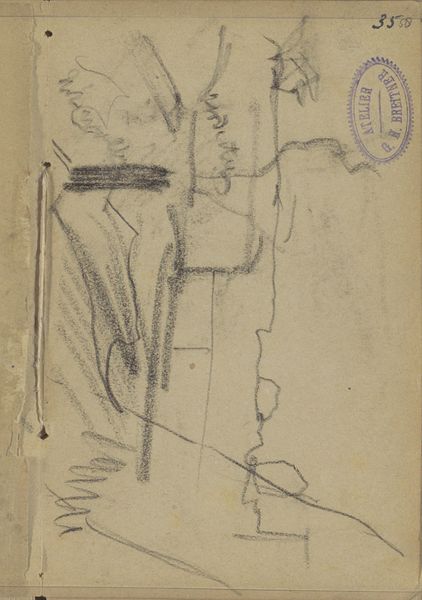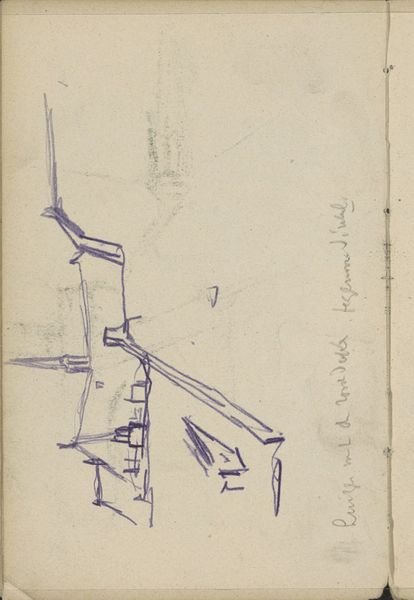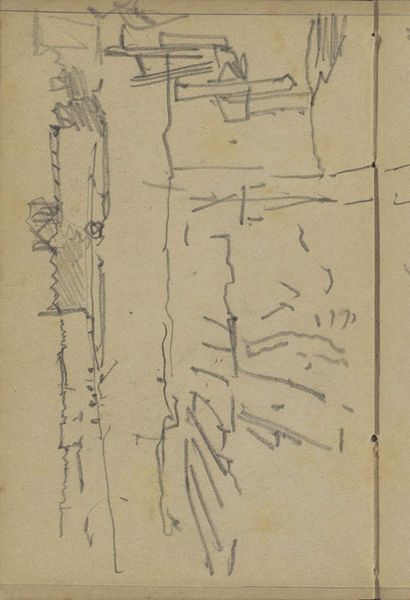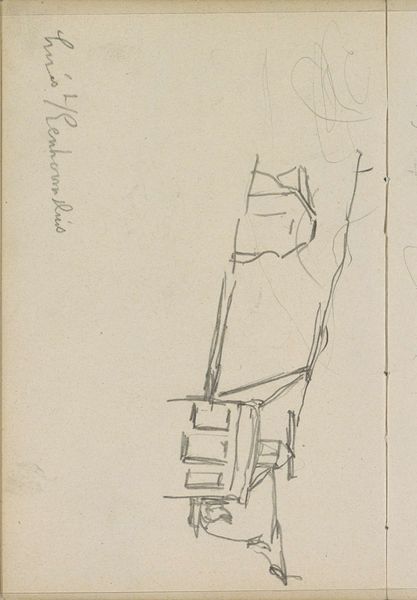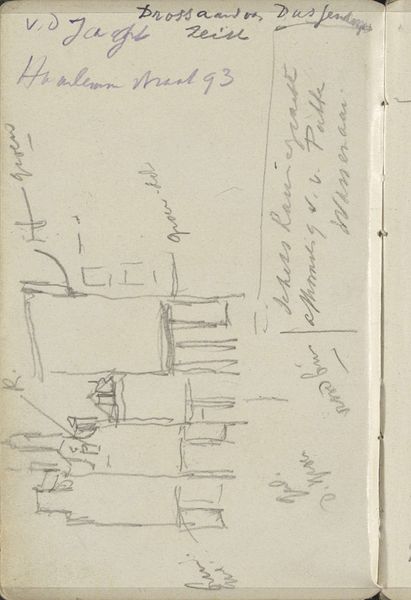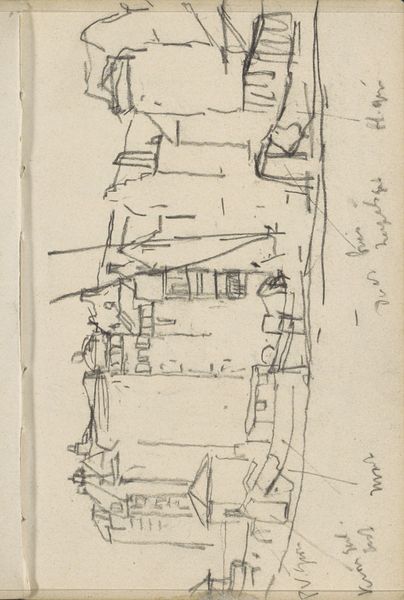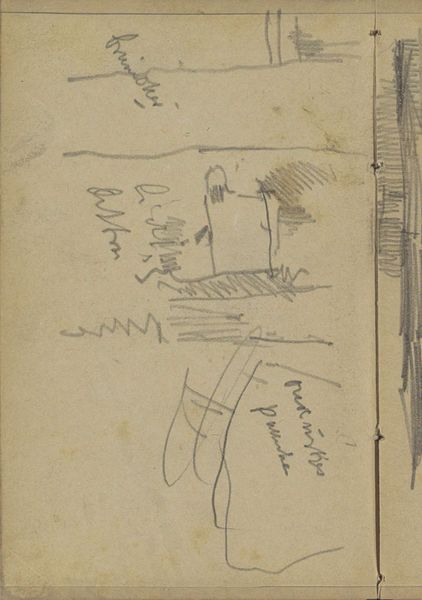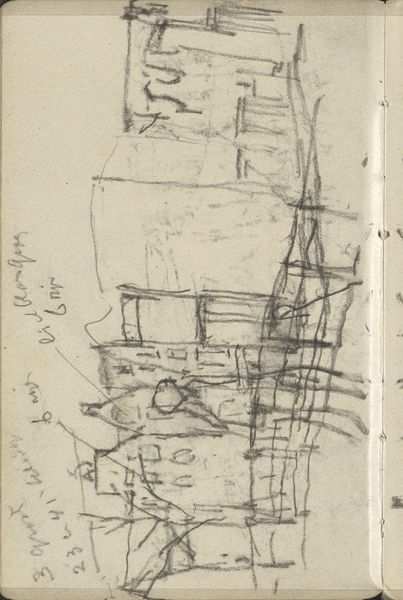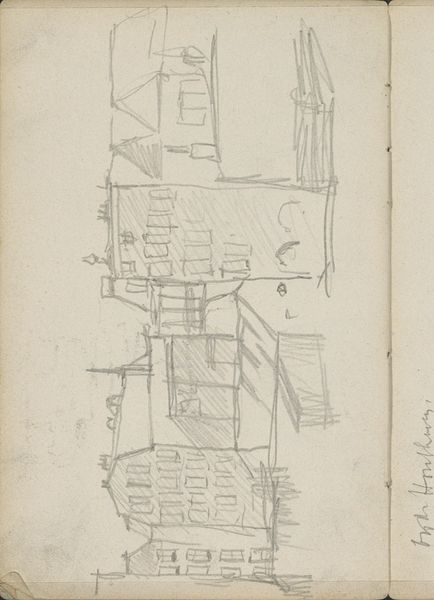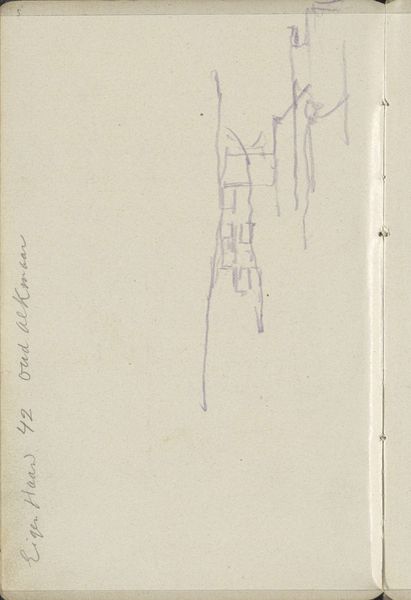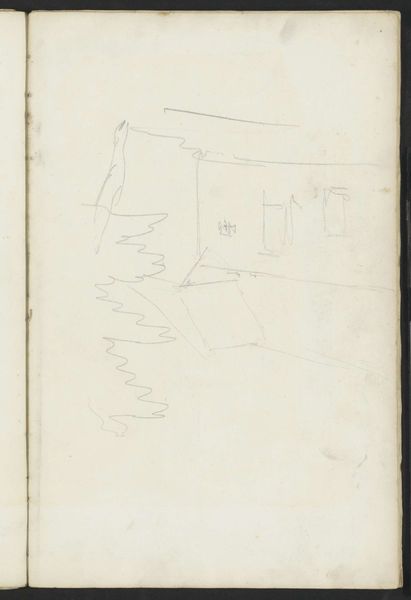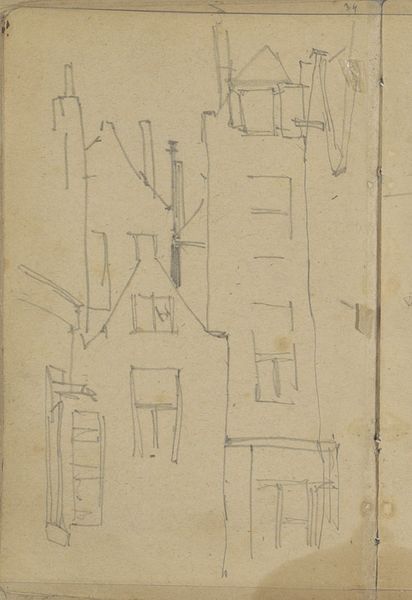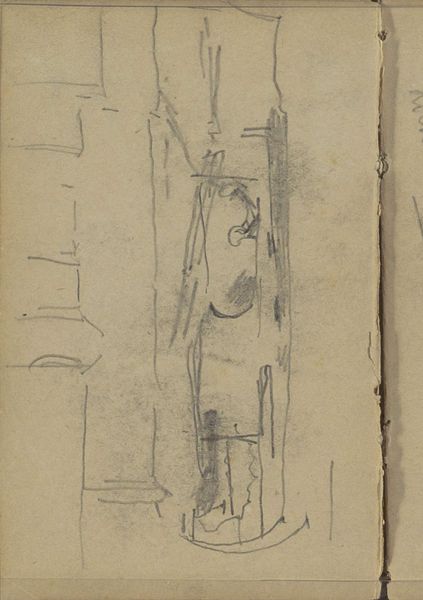
drawing, paper, pencil
#
drawing
#
amateur sketch
#
aged paper
#
impressionism
#
sketch book
#
incomplete sketchy
#
hand drawn type
#
paper
#
personal sketchbook
#
sketchwork
#
sketch
#
pencil
#
line
#
sketchbook drawing
#
cityscape
#
sketchbook art
#
initial sketch
Copyright: Rijks Museum: Open Domain
Curator: Here we have George Hendrik Breitner's "Vrouw op straat," likely sketched between 1887 and 1891. It’s a pencil drawing on paper. What strikes you first? Editor: The immediate impression is fleeting – a street scene glimpsed from a window, perhaps? There's a lovely unfinished quality to it. Almost melancholic, would you agree? Curator: The incompleteness is certainly part of its appeal. Breitner, often associated with Amsterdam Impressionism, aimed to capture the immediate reality of city life. This isn't a formal portrait; it's a candid observation. Consider how rapid sketchwork serves the politics of representing urban experience, documenting daily life among ordinary people as it unfolds, unfiltered, capturing both individual figure studies as well as environmental space. Editor: It's interesting that you mention capturing immediate reality. I see layers of history embedded. The medium itself – a humble pencil on aged paper – evokes a specific period. But I wonder about the woman depicted. Do we know anything about who she might be? Are the inscriptions near the street scene referencing other scenes or settings that the artist experienced? Curator: It is indeed interesting that there is handwriting on the work. Details on Breitner's notes found on this sketchbook page unfortunately remain elusive. But, look at the architecture. Breitner uses it almost as a stage set. What narratives do the lines evoke for you? How are certain forms highlighted over others in their level of incompleteness? I would also call attention to his well-documented engagement with photography as an art, not separate from the sketches. Editor: A stage set... yes, exactly! That helps solidify that mood I detected initially. Perhaps the hurried nature heightens the scene's dramatic effect and transient impression, mirroring life as performance and spectacle. But, more than just architectural framing, this technique offers insight to Breitner's interest in the "snapshot aesthetic," informed by and playing off the invention of the portable camera! Curator: Absolutely, and this aligns with broader artistic trends of the era, moving beyond traditional studio practices towards engaging directly with the dynamism of the modern world. We observe so well together when given the time! Editor: Agreed! It's fascinating how this simple sketch opens up so many avenues for understanding not just Breitner's work, but the cultural shifts of his time. Thank you for the context to really "see" what's here, it now speaks even deeper.
Comments
No comments
Be the first to comment and join the conversation on the ultimate creative platform.
